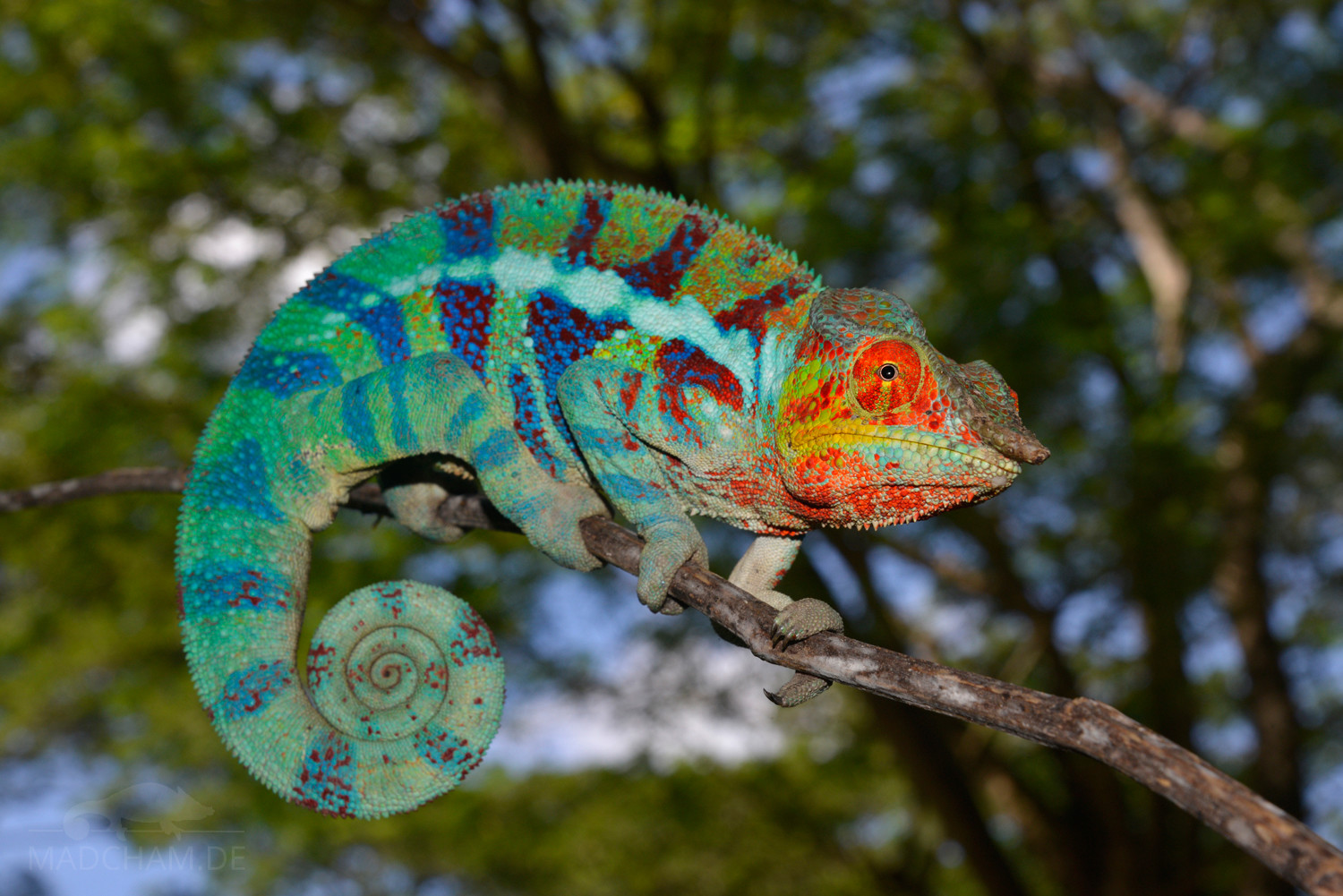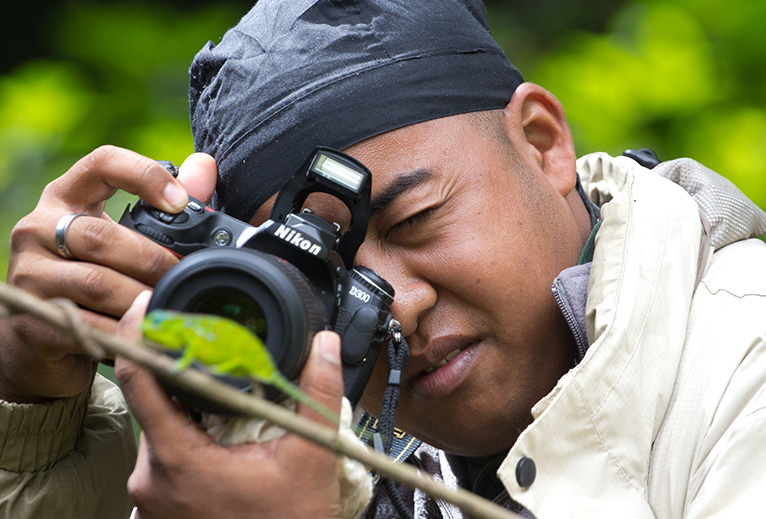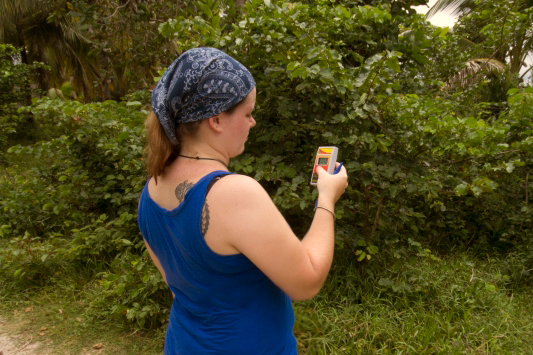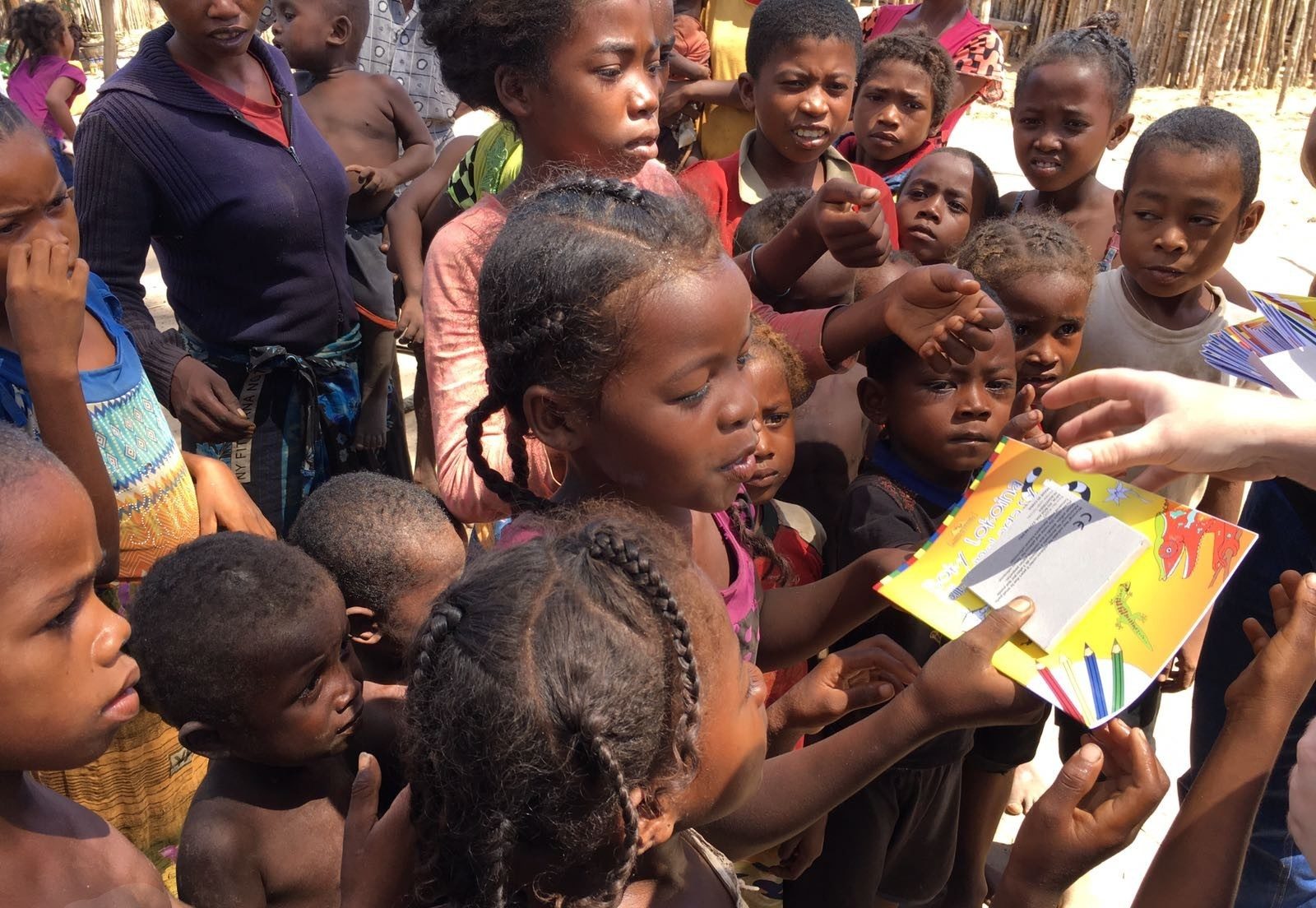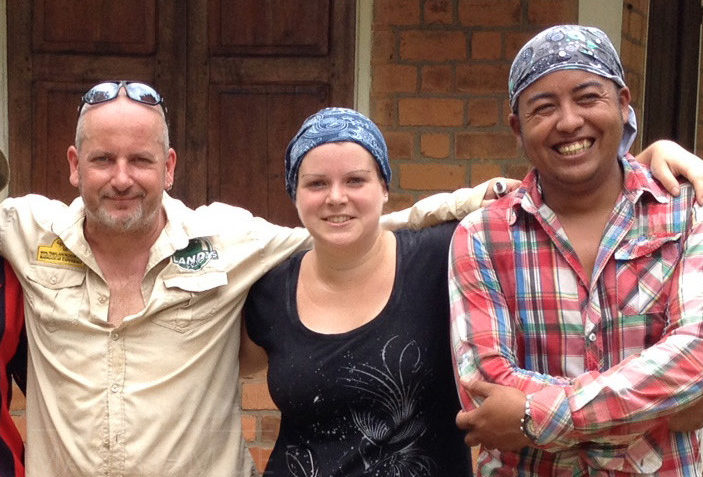Who we are
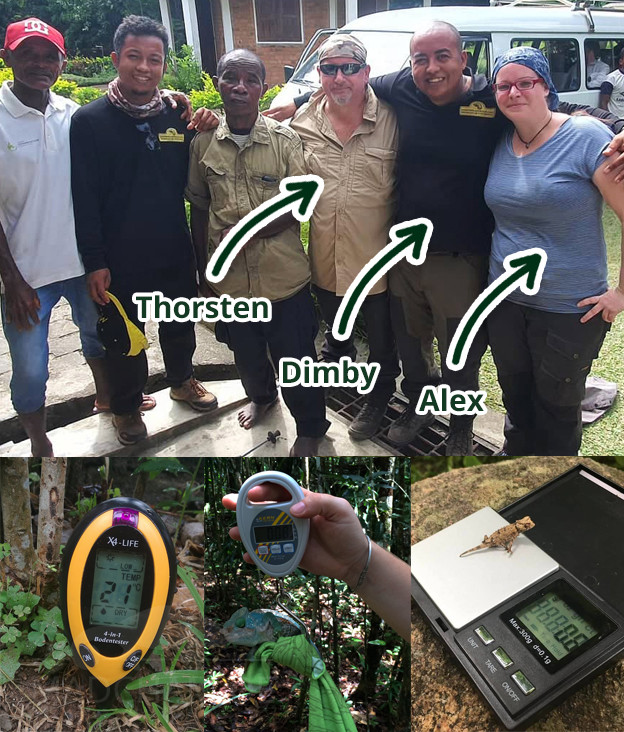
We are Thorsten, Alex and Dimby.
We are the team of Madcham.de!
Thorsten is a master photographer and head of Tanalahorizon, the travel agency for Madagascar trips, specialising in herping. Thorsten, nicknamed Tanala (Malagasy for chameleon), founded Madcham.de together with a friend 12 years ago. Alex is a veterinarian with a soft spot for reptiles, especially chameleons, and wrote her doctoral thesis on panther chameleons. Therefore she is like Thorsten for several years regularly in Madagascar to take photographs and collect data. So she came to Madcham.de and made sure that the website was revised and extended bit by bit. Via Tanalahorizon, Dimby finally discovered his love for chameleons. He is a tour coordinator and national guide. There are probably only a few people in Madagascar who have as much experience and sensitivity in dealing with the colourful lizards as he does. He is also always on the lookout for new sites for rare species.
Photo from left to right: Nestor, José, Mosesy, Thorsten, Dimby and Alex
Our aims
Our aim is to collect as much data about Malagasy chameleons and Madagascar’s climate as possible. This all is an absolute non-profit project we’re caring for in our free time. None of us earns any money by sharing self-collected data, information, and pictures via the world wide web. With Madcham.de we want to build a platform as an encyclopedia for ourselves, other chameleon keepers, breeders and people interested in chameleons in general. Finally, this shall lead to a higher awareness of species conservation in Madagascar. In the meantime, the website has grown considerably from its small beginnings. But despite a large number of photos and information, there is still a lot to do.
Local forms of panther chameleons
This is how it all began. There are so many myths and legends outside Madagascar about all the different local forms of panther chameleons. We want to help you find the truth and learn about the local facts. Where occur which colours, where are natural barriers, and which locales are simply artificial names of smart vendors? And may there be some locations where you’re not allowed to take a chameleon at all?
Documentation of chameleon species
Many chameleon species of Madagascar are relatively unknown, or at least even most chameleon keepers only know a hand full of species. But Madagascar is a treasure chest of unique chameleon species that are all worth protecting. Some species developed amazing colour variations that we document photographically. We want to show you this diversity and make sure everyone knows there is more than panthers and Parson’s.
Climate and UVB data
The goal of keeping chameleons in captivity is to bring a piece of nature into our living rooms. To make this piece of nature imitate the natural habitat at its best, we collect temperature, humidity and UVB indices. During the last years, we could install climate stations in some places to gain data directly from the chameleons’ habitats. Many data you find on the internet come from climate stations that are placed near to big cities instead of inside the chameleons’ habitats.
Incubation data
A big problem for many species in captivity: You made a rare species successfully mate and lay eggs, but nobody knows about incubation. Therefore we collect soil temperatures all year round in Madagascar, especially in nesting sites or generally where female chameleons have dug. Depending on habitat – island, highland rainforest or even spiny forest – soil temperatures can vary from the environmental temperature a lot.
Body length and weight
As far as it is possible and animal-friendly, we collect data on the weights and lengths of different chameleons. Not every animal can be weighed, but especially the common species used in captivity are often easy to handle in the wild. Thus we create separate weight curves for each chameleon species, from which average weights in Madagascar in relation to body size can be read.
Habitat pictures and 360° views
Very few chameleon owners have been to Madagascar themselves. As a result, there is often no idea what the chameleon’s habitat looks like – and Madagascar has almost every conceivable habitat from desert-like areas to the permanent green rainforest. We take photos of typical habitats and have been taking additional 360° pictures for several years. So everybody can look around in the Malagasy habitat of the animals!
Spreading knowledge in Madagascar
It is very important for us to support guides and locals in Madagascar to increase their knowledge about chameleons. Only what you know can be protected. We distribute our colouring books to children, plant cleared forest patches and provide local guides in training with updated field guides. Ecotourism only works if Madagascar itself recognizes the value of its fantastic biodiversity and forests.
New distribution records
Many chameleon species in Madagascar are restricted to very special habitats. Only a few species are native to the entire island. However, not all the sites are known to science and many populations of chameleons have not yet been studied. We search for unusual occurrences and unknown habitats all year round to improve our knowledge of the colourful lizards.
Unknown species
In Madagascar, many chameleon species are still waiting to be discovered. We have often found animals that were described as a separate species only years later. Our big goal and of course until now rather a pipe dream is to discover and describe a new species ourselves. But after we have already achieved so many small goals – who knows, discovering a new species might still come?


